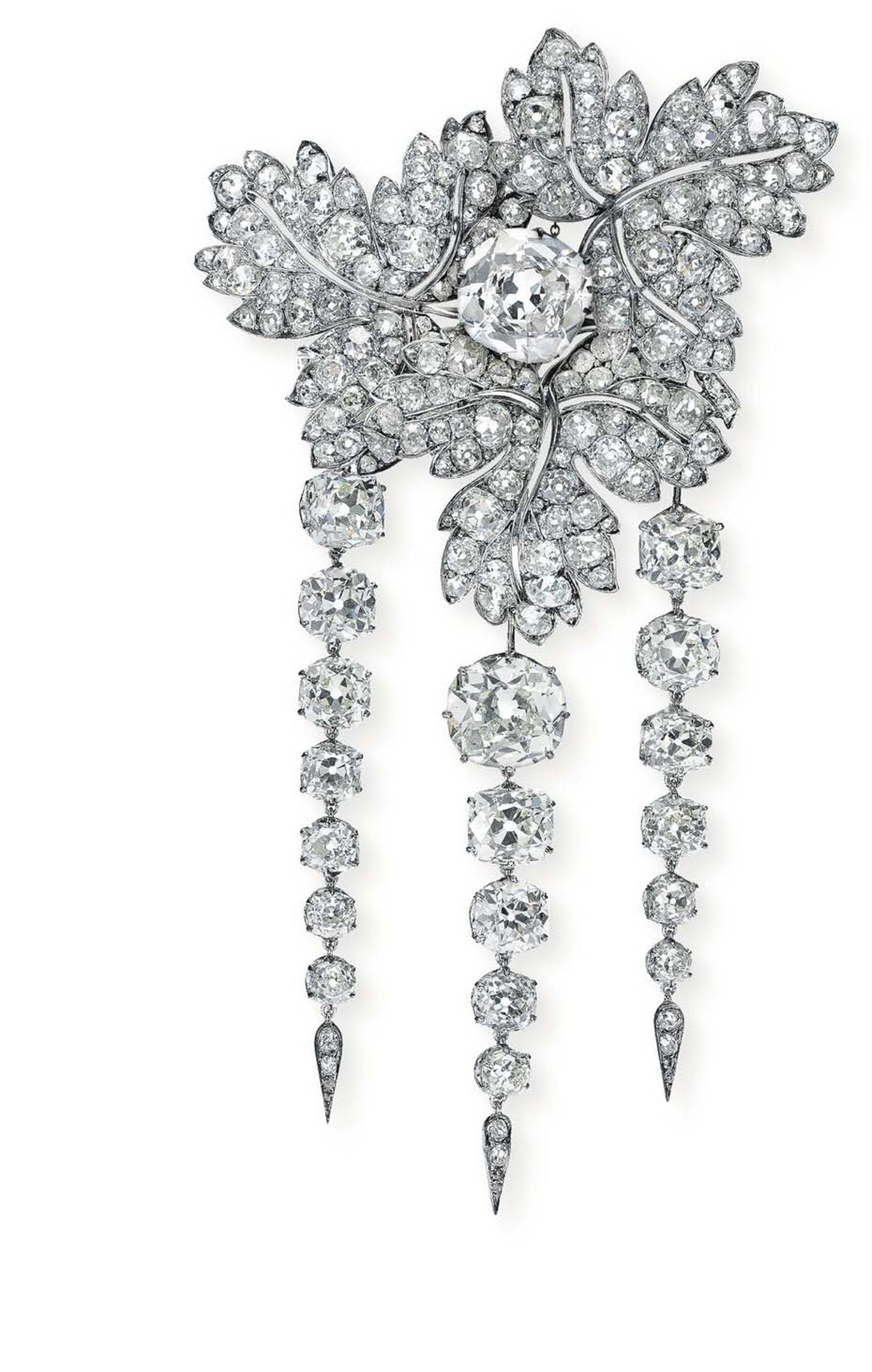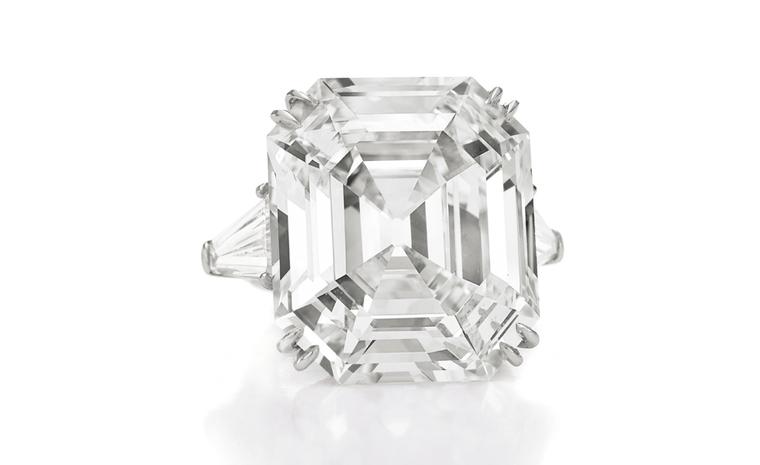
By Maria Doulton in London
A brooch belonging to Empress Eugenie of France will be auctioned at Christie's Geneva on 11 November 2014 as part of its Magnificent Jewels sale. It is an extremely rare and historic occasion as the Feuilles de Groseillier brooch hasn't been offered for sale for more than 125 years.
Raymond Sancroft-Barker, jewellery director at Christie's London, was on hand to show me this piece of history, reiterating that the value of this brooch, estimated at US$2-3 million, lies in its "unquestionable royal provenance". There are many vintage jewels that are "alleged to have belonged to" or were "perhaps" part of a royal collection, but in this case there is not a shadow of a doubt that this was the Empress Eugenie's brooch. There is even an original auction catalogue from 1887 attesting to its royal French pedigree.
The brooch belonged to Eugenie de Montijo, the last Empress of France, who married Napoleon III in 1853. Elegant and extremely fashion-conscious, Eugenie was born into a noble Spanish family in Granada, and her style and intelligence would exert a huge influence in the French court. Her love of jewellery was legendary, and she commissioned the court jeweller Alfred Bapst to make this particular piece in July 1855.
About the size of my palm, the brooch is surprisingly light, which is a plus given the fact that it is just one of 30 different "feuilles de groseilliers" that formed the magnificent parure designed to swathe the Empress' neck, bust and dress in diamond currant leaves.
The brooch features a cluster of three openwork currant leaves emanating from a larger cushion-shaped diamond and three detachable articulated pampilles set with old mine-cut diamonds. The setting, crafted from white gold and silver, is, Sancroft-Barker explains, "made from a minimum amount of metal to reduce its overall weight".
Following the fall of the Second Empire in 1870, Eugenie and her husband abandoned France and, in 1887, the French government auctioned off all the belongings of the royal family and jewellery, as, explains Sancroft-Barker, "the Republican element got to work". The parure was dismantled and sold in different lots at a 12-day auction in 1887. Tiffany & Co., the largest buyer at the auction, secured the brooch.
In a strange twist of fate, the brooch was bought by the Metropolitan Opera of New York in 1936 as a farewell gift for another Spanish lady, the famous soprano opera singer Lucrezia Bori. Upon her death, she bequeathed the brooch to the Met.
All eyes will be focussed on the brooch next month, which is destined for yet another adventure in its international career.





